Hom Market: One of Hanoi’s Most Distinct Traditional Markets
Few locations can match the experience of visiting Hom Market for fully absorbing Vietnamese culture. Tucked in the center of Vietnam, this busy market is a vivid tapestry of life that provides a window into the daily rhythms of the residents, not only a place to buy. This article from MOTOGO Tours will help you navigate all you need to know about this special market.

The Rich History of Hom Market
Originally a small commercial place used by residents to purchase and sell necessities, Hom Market was founded during the French colonial era. It evolved over the years from a little community center to a busy market serving the requirements of the local population as well as more and more tourists.
A Glimpse into Hom Market’s Origin
Hom Market, which located in the Hai Ba Trung area, grew to be a hive of activity for individuals seeking not just business but also social connection. Its first arrangement was straightforward, with open-air booths lacking much in terms of formal organization. But it expanded rapidly in scope and appeal, meeting local requirements and reflecting the classic Vietnamese market experience.
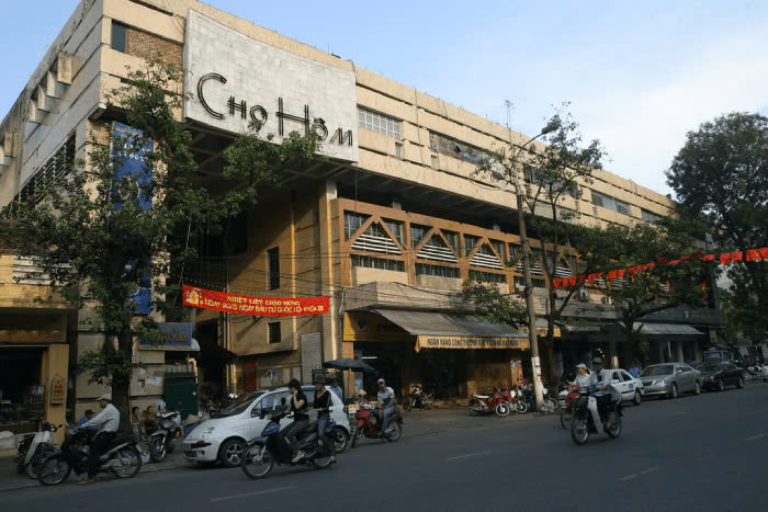
The Evolution of Hom Market Over Time
Hom Market grew with Hanoi. The market changed throughout years to match the dynamic character of the city. Renovations on the market building in the 1990s resulted in a more modern, orderly layout that nevertheless captures its vibrant, historic character. Hom Market today runs out of a big multi-story facility with sections for fresh food, fabrics, home items, and more.
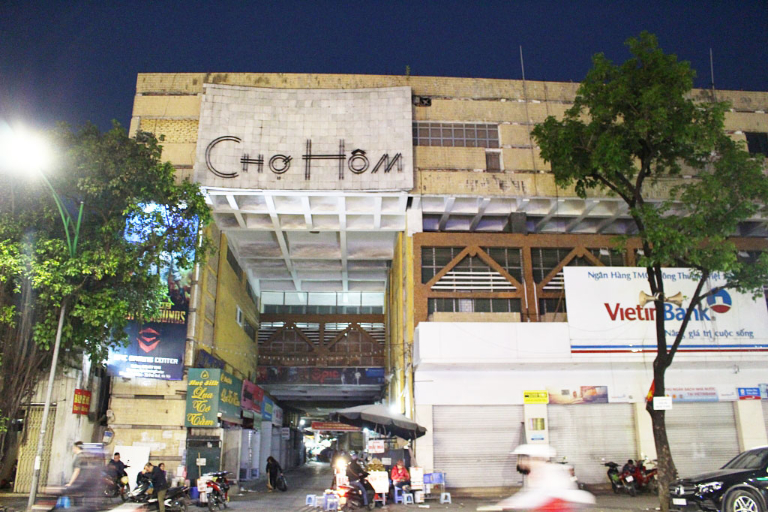
How to Get to Hom Market
With particular hours ranging from early morning till late afternoon, Hom Market is open daily. Conveniently situated in Hanoi’s Hai Ba Trung area at 79 Pho Hue Street, this market is easily reachable from all throughout the city, particularly from the Old Quarter. The following are the greatest approaches to get at that:
- Taxi or Grab: Taxis and Grab are readily accessible all throughout Hanoi. From the Old Quarter, a taxi or Grab ride runs roughly ten minutes and costs between fifty,000 and seventy,000 VND, or roughly $2 to $3 USD. Convenience and comfort call for this choice, particularly if you are carrying products or traveling in a group.
- Motorbike: Renting a motorbike is a cheap and popular choice for people who feel confident negotiating the busy streets of Hanoi. From roughly 100,000 to 150,000 VND daily, or roughly $4 to 6 USD, motorbike rentals are accessible. Direct guidance to Hom Market from Google Maps will lead you to parking close by.
- Public Bus: Hom Market may be reached from Hanoi by reasonably priced public bus system. There are several bus lines running to the Hai Ba Trung region. Search for buses numbered 23, 26, and 38, which all stop close to Pho Hue Street—a short stroll from the entrance to Hom Market. A somewhat cheap choice, bus tickets run about 7,000 VND (about $0.30 USD).
- Walking: Walking to Hom Market might be a fun approach to see the streets of Hanoi up close if you are staying near the Old Quarter. About thirty minutes separate the walk from Hoan Kiem Lake, which lets you discover Hanoi’s distinctive architecture, stores, and street cuisine all along.
- Guided Tour: To improve your experience, you can join guided excursions including Hanoi Motorbike Tours. Their guide will give you all Hom Market related knowledge.
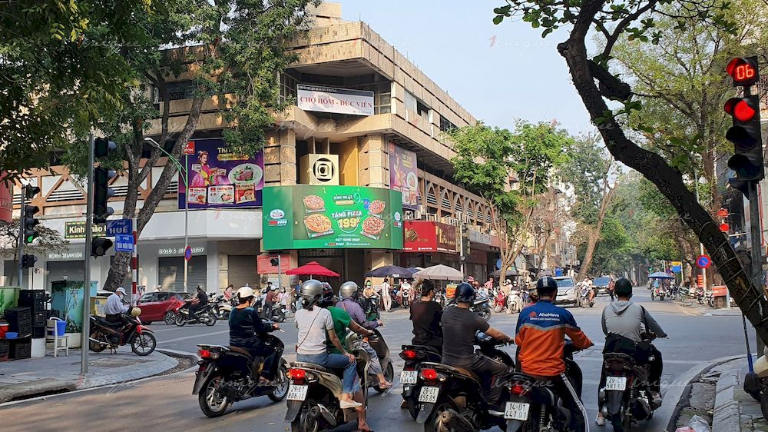
>>> Let’s see more: Dong Xuan Market: Hanoi’s Vibrant Cultural and Shopping Hub
The Vibrant Atmosphere of Hom Market Today
Found in the Hai Ba Trung area of Hanoi, Hom Market is a hive of daily life and local culture. From the moment you walk in, you are surrounded by a sensory feast—the energetic conversation of vendors, the scent of freshly made street food, and the rich colors of produce and textiles all create a scene special to this section of Hanoi.
The Layout of Hom Market
With each area thoughtfully placed to provide customers with a unique experience, Hom Market covers many floors. Fresh food and vegetables occupy the ground floor; textiles and household goods occupy the top stories. The layout is meant for simple exploration so guests may move from one area to another discovering many parts of Vietnamese culture along the way.
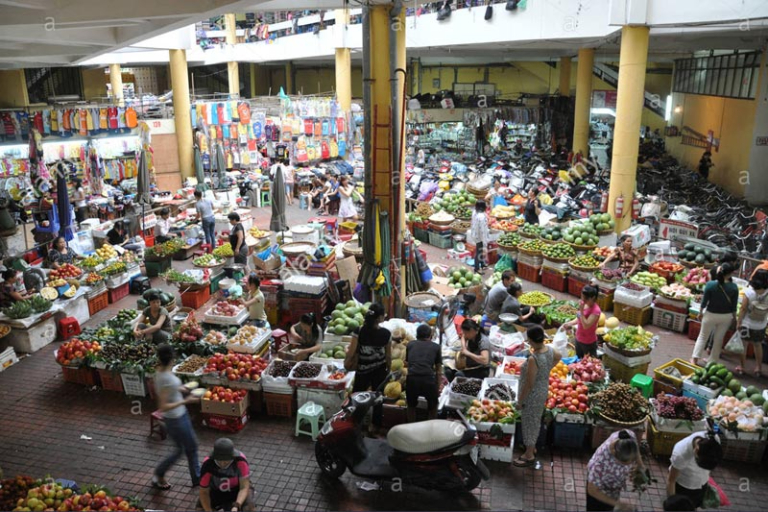
A Tour of the Main Sections
Fresh Produce and Local Ingredients
Dedicated to fresh goods, the ground floor highlights Vietnam’s agricultural wealth. Mountains of vivid fruits, herbs, vegetables, and spices line vendors’ stalls, each placed to create an appealing presentation. This space is a sensory feast from basic greens like morning glory and fresh herbs like basil and coriander to more unusual delicacies like dragon fruit and lychee. Seasonal goods make this area continuously changing and enable returning visitors to always find something fresh.
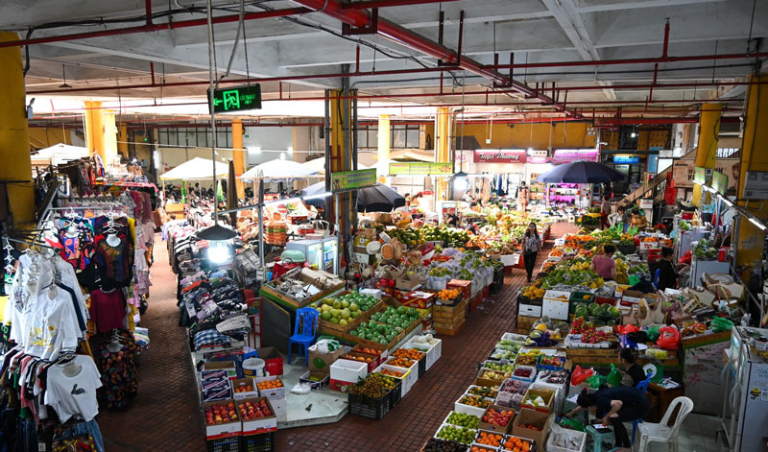
The Fabric Market – A Haven for Textile Lovers
Hom Market is well-known for its area on textiles and fabrics, where customers may find a great range of colors, textures, and patterns. This higher level portion has everything from quality silk and cotton to classic brocades and complex embroidery. Many come here to search for traditional Vietnamese fabric, ao dai (long dress) materials, or fabric for hand-made clothing.

Household Goods and Souvenirs
Shoppers on the second floor will find a variety of souvenir items and houseware. Commonly utilized in Vietnamese homes, this section provides a sensible assortment of kitchen utensils, ceramics, cookware, and other house basics. For those wishing to collect mementos, there is no shortage of distinctive objects—from bamboo kitchenware and little décor pieces to handcrafted baskets and classic teapots.
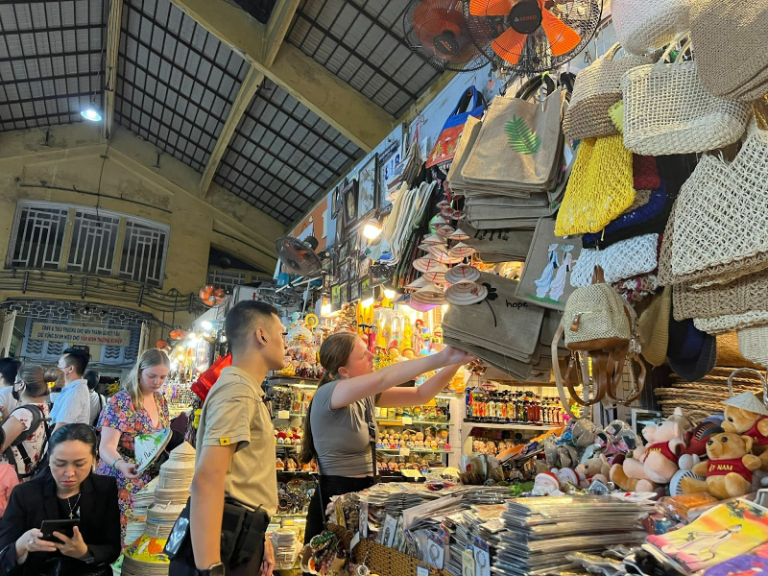
Must-try dishes at Hom Market
- Steamed Rice Rolls: Thin rice buns stuffed with minced pork and mushrooms topped with crispy shallots and presented with a mild fish sauce dip. A common breakfast food with a delicate, melt-in–the-mouth quality.
- Banh Mi: This iconic sandwich is stuffed with grilled pork, pate, fresh veggies, and herbs. The fillings are often tailored by Hom Market’s suppliers, therefore giving every mouthful a distinctive local edge.
- Fried Spring Rolls: Noodles, pork, and vegetables stuffed into crispy rice paper rolls . Served with a zesty dipping sauce, these are perfect for a quick snack.
- Bun Cha (Grilled Pork with Vermicelli Noodles): A Hanoi specialty is smokey grilled pork presented in a sweetened fish sauce alongside fresh herbs, pickled vegetables, and vermicelli noodles.
- Turmeric Fish with Dill: Often presented with vermicelli, peanuts, and fermented shrimp paste for dipping, tender grilled fish seasoned with turmeric and dill is called turmeric fish with Dill.
- Fresh Pho Rolls: Dipped in a tart fish sauce, fresh rice noodles folded with meat and herbs. a welcome variation on classic pho.
- Sticky Rice with Mung Bean: Fried shallots and mung bean paste top sticky rice. Some booths include shredded pork or chicken, which makes breakfast a filling, comforting meal.

From fresh herbs to savory meats, Hom Market presents a combination of Hanoi’s famous tastes all wrapped in the excitement of the local food scene. Visit early, investigate the smaller booths, and try a range of cuisine for the best experience!
Shopping Tips for Visitors at Hom Market
Engaging local vendors, learning about traditional Vietnamese goods, and gathering some unusual mementos may all be done at Hom Market. These simple ideas can help you negotiate the market and make your shopping experience pleasant and quick.
Bargaining Etiquette in Hom Market
Shopping at Hom Market will firstly let you realize that negotiating is really normal. Vietnamese markets, especially Hom Market, welcome negotiations as means of deciding the ultimate price. Although first it could be frightening, negotiating is a joyful and expected aspect of the experience since it enhances the vibrant market environment.
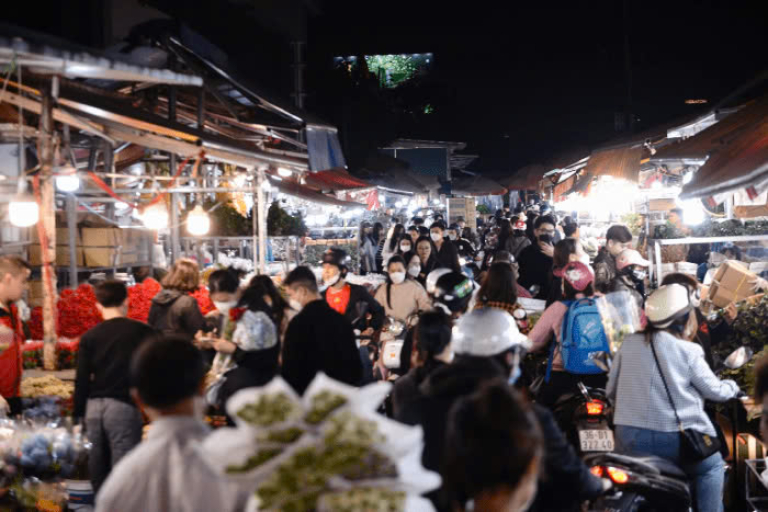
These ideas should help you keep in mind during negotiations:
- Start low: Start always with an offer less than the vendor’s listed price. This allows you space to work out a middle ground and compromise.
- Be polite and friendly: One may say a lot about a grin and friendly attitude. Vietnamese merchants value polite consumers, hence attempt to keep a good relationship throughout discussions.
- Don’t be afraid to walk away: If the pricing is off-target, do not hesitate to turn away. Usually, especially if the vendor notes your seriousness about purchasing, the dealer will contact you back with a better price.
- Know your limits:Before beginning the negotiation, you should be clear about your intended expenditure. Having a pricing range will enable you to keep inside your means.
Recall that negotiating is about determining a price the merchant and you will both find satisfactory. Should you find a decent bargain, both sides depart content!
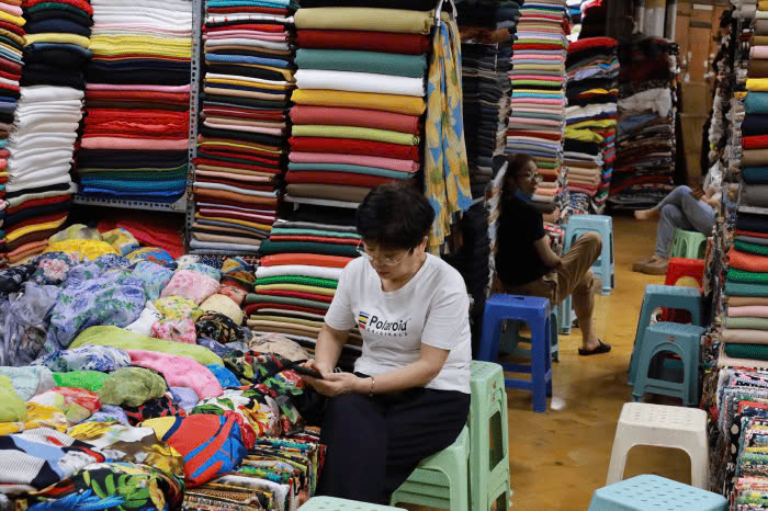
Best Times to Visit
Your shopping experience at Hom Market can be much influenced by the time of your visit. Your visit may find the market busy or more laid back depending on when you attend. Keep in mind the following:
- Early morning (6:00 AM – 9:00 AM): If you’re looking to buy fresh produce, this is the best time to visit. Early in the morning vendors set up; you will find the freshest meats, fruits, and veggies here. Furthermore, it’s less congested at this time so you may browse in a more serene surroundings.
- Midday to early afternoon (10:00 AM – 2:00 PM): This is when the market gets more crowded, particularly with residents buying at lunch. If you enjoy fabrics or souvenirs, now is a fantastic opportunity to investigate the higher tiers of the market. Although the throng could be a little bigger, you will find enough of items to peruse.
- Late afternoon (3:00 PM – 5:00 PM): As the day draws to a close, some stores might start to provide discounts to empty out last-minute inventory. Now is a fantastic opportunity to find a bargain, particularly if you intend to purchase souvenirs or houseware.
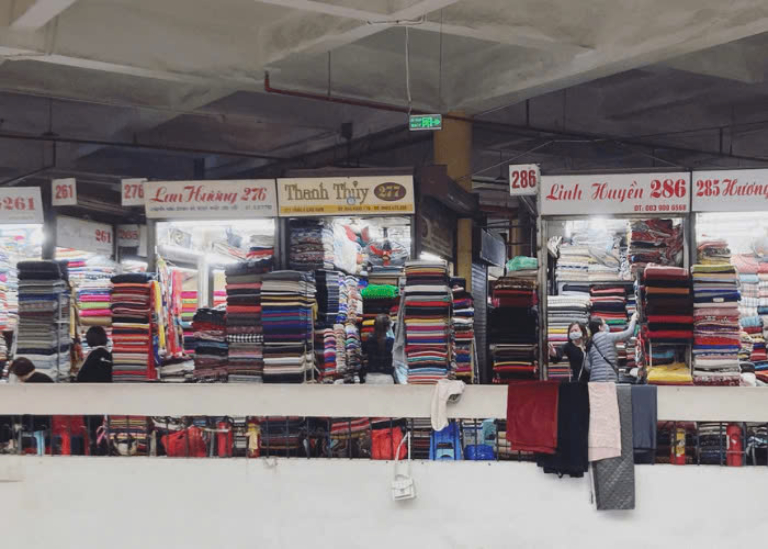
Tips for First-Time Visitors
Especially for first-time visitors, navigating the markets can be taxing. It’s easy to get lost with its labyrinth-like aisles, vendor hustle and bustle, and plenty of merchandise. These pointers should assist you to have a seamless purchasing experience:
- Wear Comfortable Clothing and Shoes: Hom Market is a crowded, active area where you will be moving about a lot. Particularly if you intend to investigate every area of the market, be sure you choose comfortable shoes.
- Cash Is King: Although some vendors might take credit cards, Hom Market prefers cash as the accepted form of payment. Bring enough Vietnamese đồng (VND) for your purchases; many stores might not have change for big bills, hence be ready to pay in lower values.
- Bring a Reusable Bag: If you are shopping for fabrics, textiles, or souvenirs, a reusable bag can help you to transport your goods. It’s a good idea to be ready since many merchants could not offer bags.
- Stay Alert: Hom Market might be packed, like any bustling market, thus take care of your items. Keep your phone and wallet close-by; avoid displaying a lot of cash. For extra security if you are carrying valuables, think about adopting a money belt or anti-theft backpack.
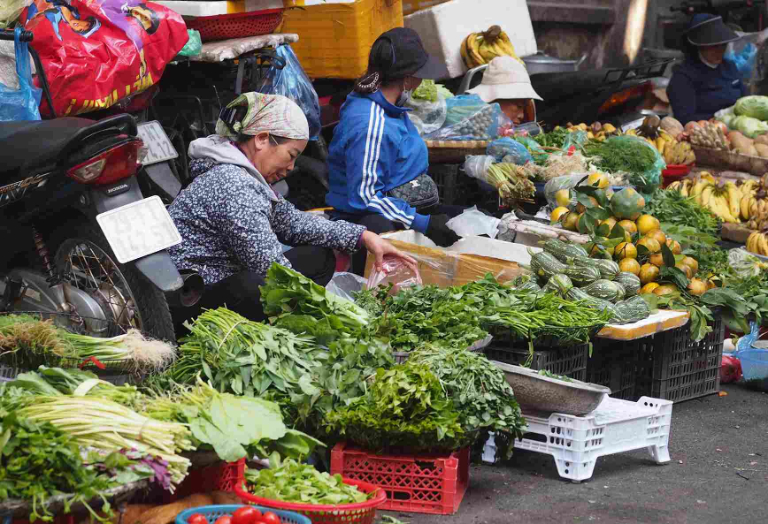
Hom Market is an experience that lets you really into the core of Hanoi’s culture and daily life, not only a place to buy goods. The dynamic environment of the market, historical relevance, and great variety of products give a special chance to link with the history and present of the city. Hom Market has an interesting mix of old and modernism regardless of your level of experience with travel.
Related Posts:

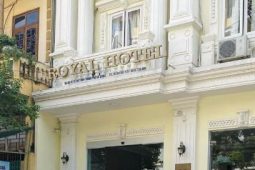









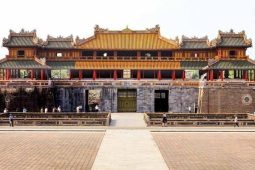


Be the first to comment!